Skateboarding is one of the easiest sports to pick up. All you need is a board with wheels, a helmet and a pair of legs. Oh, and a total lack of fear.
What started as a fun and accessible hobby has developed into one of the most extreme sports around. Some of the tricks done by pro skaters like Tony Hawk are downright death-defying.
To see how the sport has evolved, check out these fascinating facts and stats about skateboarding.
Skateboarding likely began in the 1920s.
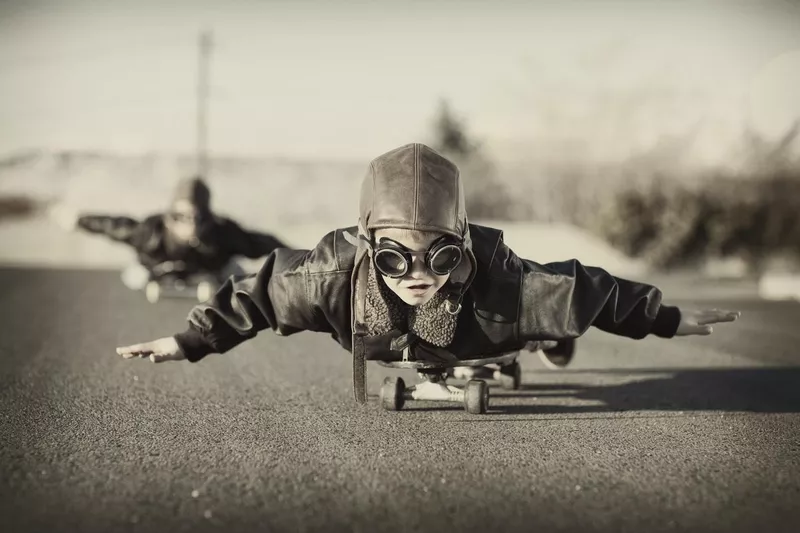
Skateboarding has a long history of good times. RichVintage / Getty Images
The first skateboards weren’t actually skateboards at all. They had three wheels and were made for skiing practice, accompanied by poles.
They were fun enough to use that people began developing similar boards to be used on their own.
The first real skateboards appeared in the 1940s.
The first mass produced skateboards came out in 1959.
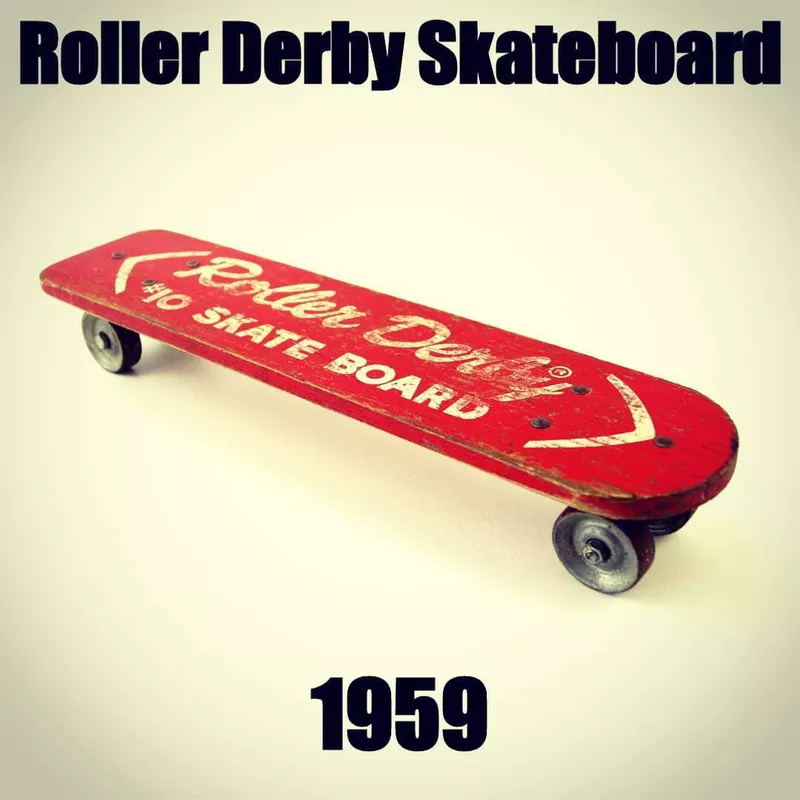
This is what the first mass-produced skateboard looked like. Back Skateboard / Facebook
The Roller Derby Skate Company made the first mass-produced skateboards in the 1950s.
They were a huge upgrade from the makeshift skateboards kids made themselves using milk crates with wheels on the bottom.
Skateboard wheels were once made of metal.
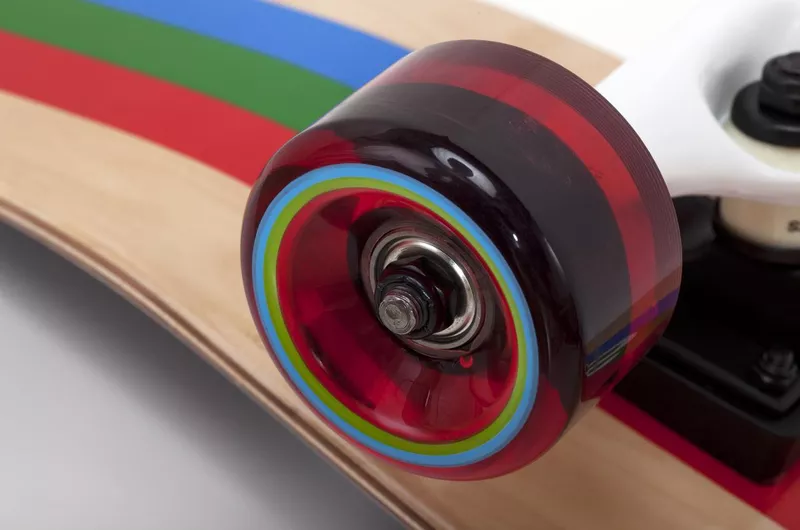
Polyurethane skateboard wheels were a big innovation. skodonnell / Getty Images
Initially, skateboard wheels were made of steel. Metal wheels didn’t offer much traction or impact absorption, however.
In 1972, Frank Nasworthy came up with a solution: the polyurethane skateboard wheels we still use today.
Alan Gelfand invented the ollie skateboard trick.

The ollie is one of the most famous skateboarding tricks. BraunS / Getty Images
Of course, other people probably came up with tricks before then, but Alan Gelfand was the first to launch his board into the air without using his hands.
It was the first officially named skateboarding trick.
Surfers didn’t actually invent skateboarding.

Has skateboarding ever not been cool? wundervisuals / Getty Images
This common misconception comes from the fact that skateboarding became popular with surfers in the 1960s.
They helped to draw attention to the growing sport and improved upon it, but they didn’t invent it.
The most expensive skateboard sold for $59,000.
Jeffree Star bought a Louis Vuitton X Supreme skateboard for his boyfriend for nearly $60,000.
Sadly, the elite board snapped in half after just a few tricks.
Skateboarding is less dangerous than many other sports.
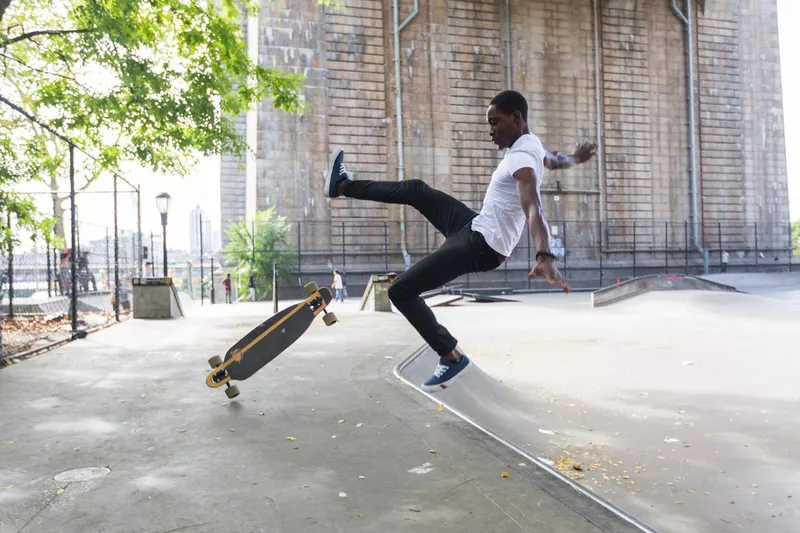
Skateboarding is not for the uncoordinated. william87 / Getty Images
The concept of flying down hard pavement on a plank of wood seems hazardous, but more people are sent to the ER each year for basketball or biking injuries than for skateboarding mishaps.
Millions of people skateboard on a regular basis.
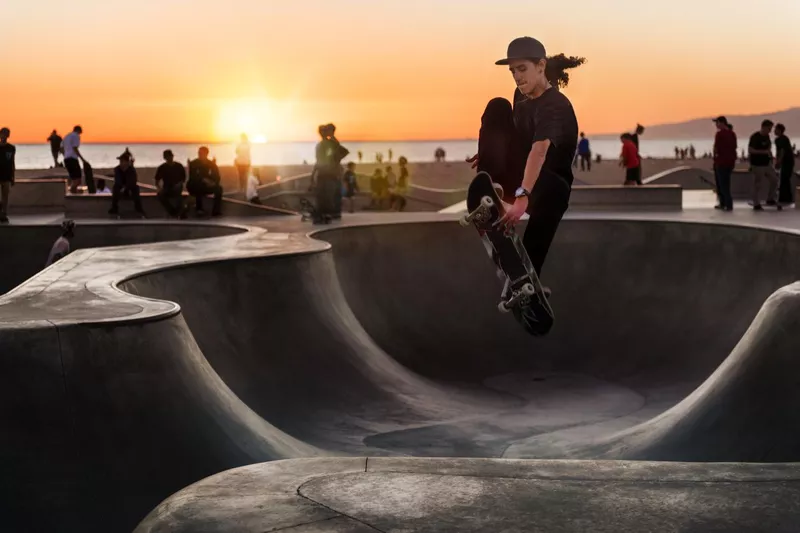
Skateboarding stats have changed a lot in the past years. lisegagne / Getty Images
About 20 million people skateboard worldwide, with 16 million of those residing in the United States.
As far as which state loves skateboarding the most, California takes the cake, with about 5 million skaters in the Golden State alone.
The popsicle skateboard design is the most popular.
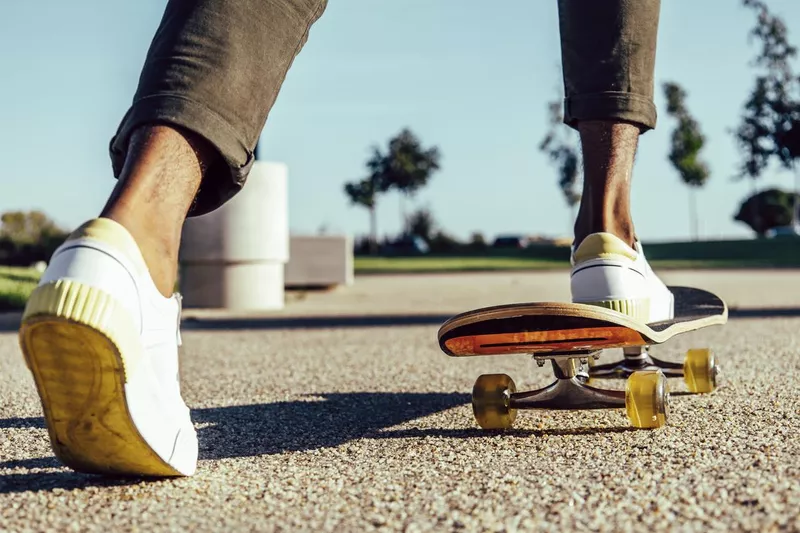
Classic board. Sunny day. Perfection. Alberto van Herckenrode / Getty Images
Popsicle skateboards, the traditionally shaped skateboard, were the most frequently bought in 2018, accounting for 50.7 percent of all skateboard revenue.
Longboarding, however, is the most rapidly growing skateboarding discipline.
Tony Hawk remains the richest skateboarder in the world.
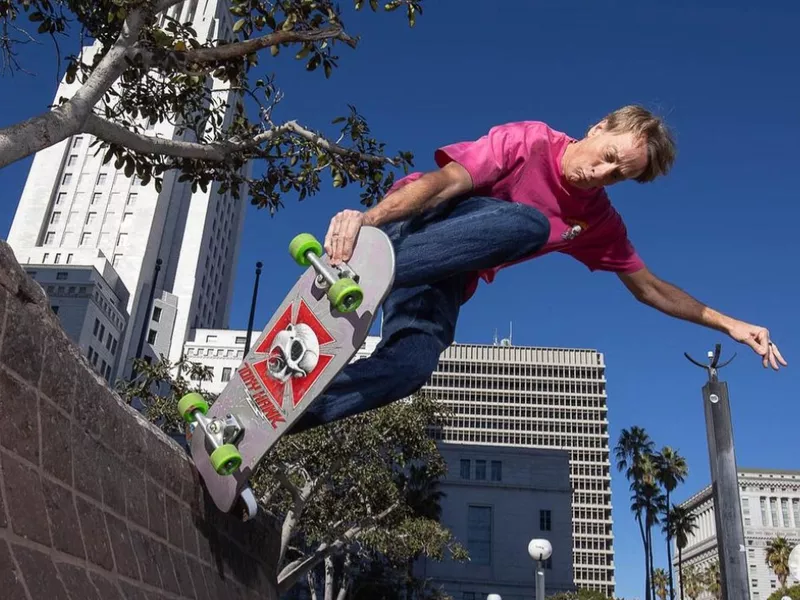
Tony Hawk took skateboarding to new heights. Tony Hawk / Instagram
As of 2021, Tony Hawk’s net worth is estimated at $140 million.
Much of that is from his illustrious skateboarding career, but he’s since earned money as an actor, with his Activision video game franchise, and as the owner of his own skateboard company, Birdhouse.
If you want lots of skate park options, move to Laredo, Texas.
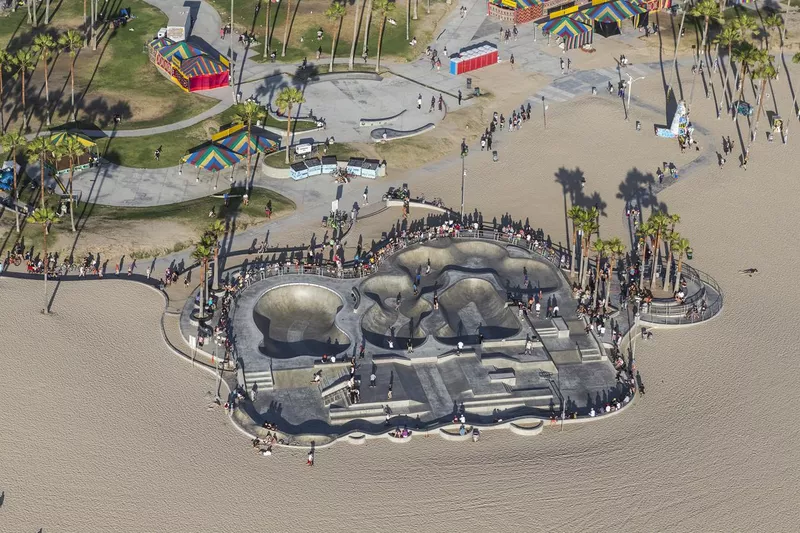
Venice Beach in Southern California has one of the most famous skate parks in the world. trekandshoot / Getty Images
The city has the most skate parks per resident of any city in the world, with 268,976 residents and 11 skate parks. That beats out Sacramento, Reno, and Vegas by a landslide.
There are cities with many more skate parks, but they also have much larger populations.
See what the best skate park is in your state.
Skateboarding is one of the most accessible sports.
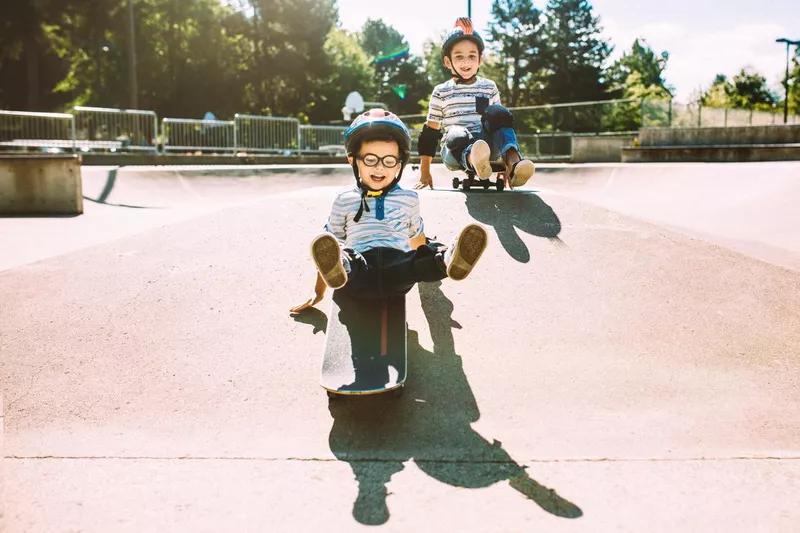
Skateboarding is fun for all ages. RyanJLane / Getty Images
Many sports are prohibitively expensive to get into due to the equipment and training required.
In comparison, buying a skateboard, helmet and other protective gear can be achieved with less than $100, and you can learn how to do it all on your own.
There are more female skateboarders now than ever before.
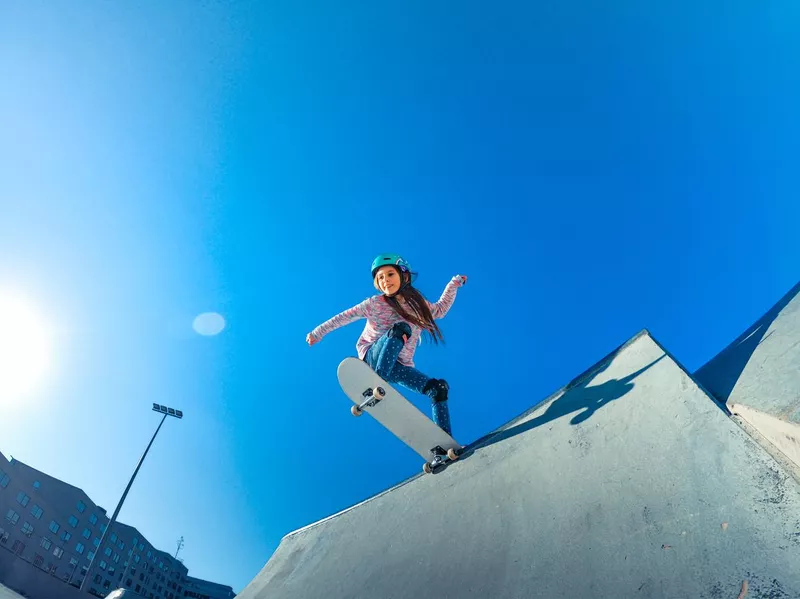
Girls can skate, too. CasarsaGuru / Getty Images
Skateboarding used to be dominated by boys and men. Changing perspectives along with the pandemic changed that.
From 2020 to 2021, the number of female skateboarders grew by about 24 percent. They contributed to a massive boom in skateboard sales, and are gradually changing the demographics of serious competitions.
The biggest skate park in the world is in China.
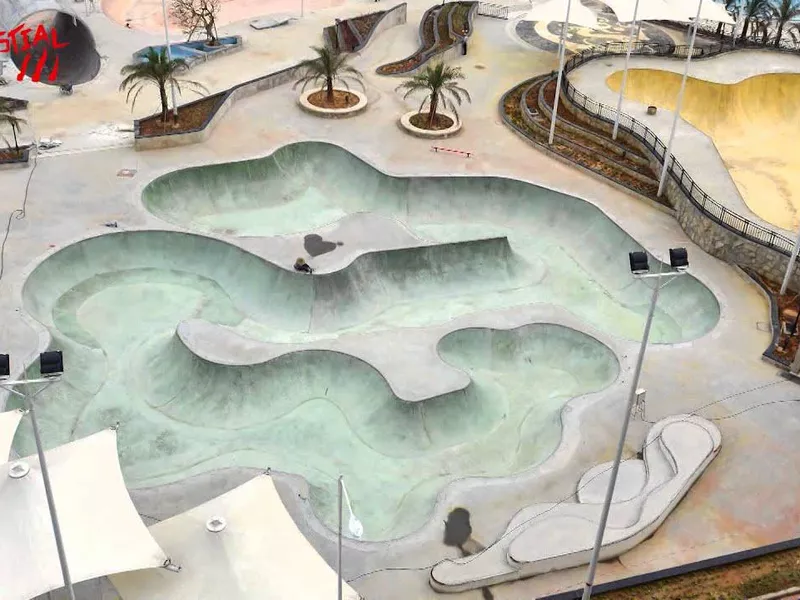
China has the biggest skatepark in the world. bestialwolfscooter / YouTube
The GMP Skatepark in Guangzhou takes up 182,000 square feet. It’s located within a massive sports complex surrounded by 10 universities, so college students have easy access to sports and recreation.
Aldrin Garcia holds the record for highest ollie.
That would be 3.9 feet. It may not sound like much, but when you’re jumping over a bar from the flat ground, that’s extremely impressive.
Most people can’t jump over that on two legs, let alone on a board with wheels.
The highest air on a skateboard was 25.49 feet.
Skateboarder Danny Way caught enough air to jump on top of the average two-story house.
How he did it without breaking any bones is beyond us.
Skateboarding injuries usually involve one of three body parts.
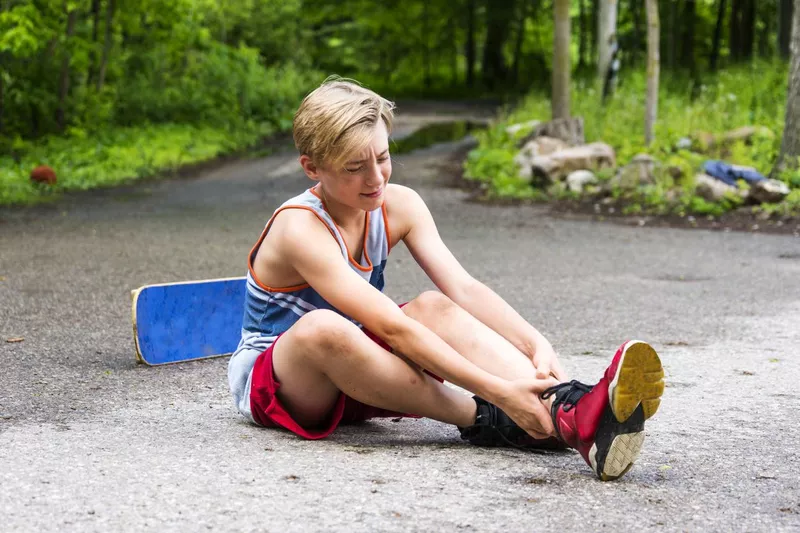
Protect yourself at all times. Fertnig / Getty Images
Most skateboarding mishaps involve damage to the wrist, ankle or face. Head trauma is the most hazardous, but thanks to helmets, serious head injuries are few and far between.
Try not to land on your face, and you’re golden.
The fastest skateboarder on record is Kyle Wester.
Just outside of Fort Collins, Colorado, Kyle Wester managed to hit 89.41 mph on a skateboard.
Surprisingly, he got away without a speeding ticket.
Skateboarding goes in and out of style.
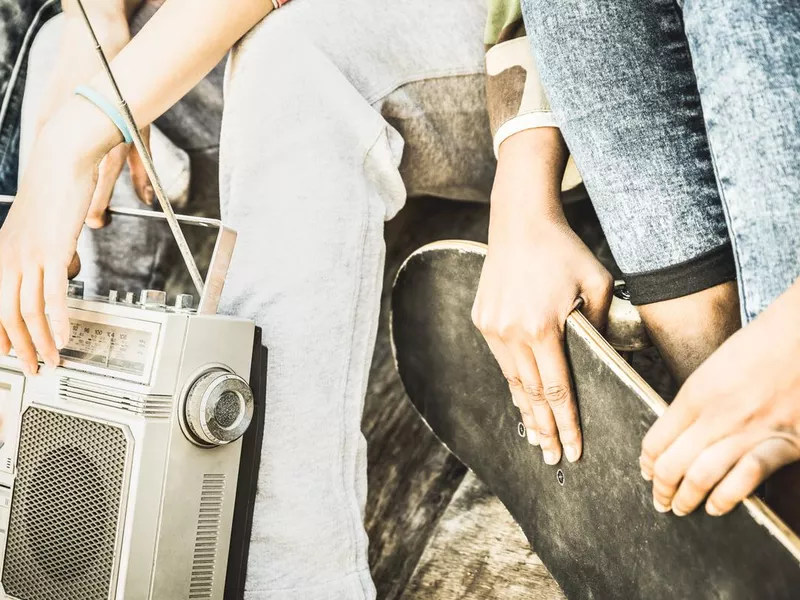
There are close to 9 million skaters. ViewApart / Getty Images
Like everything else, skateboarding trends come and go.
Skateboard sales tanked dramatically in 2004, but the pandemic sparked new interest in the sport.
Don’t become a pro skateboarder if you want to get rich quick.
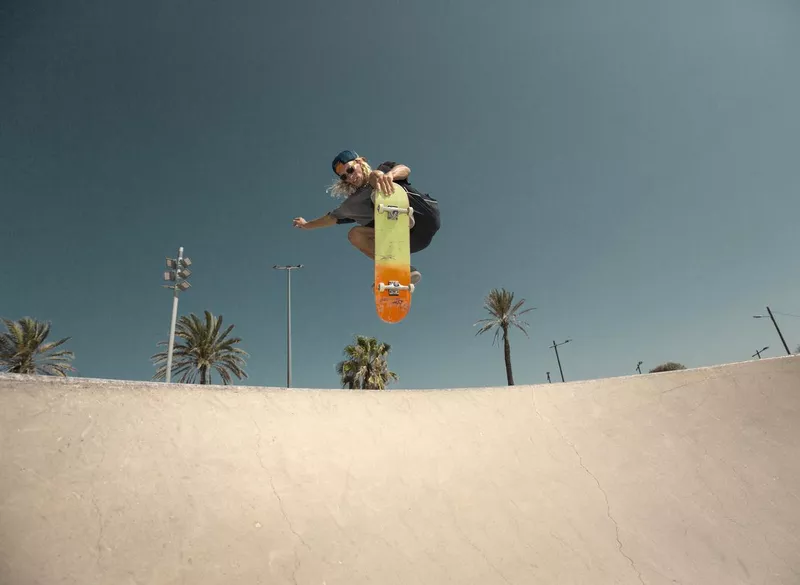
Only the best of the best skaters go pro. aluxum / Getty Images
That’s not to say that some skateboarders don’t make it big, but it’s a huge gamble. The best of the best make up to $10,000 a month, but some make as little as $1,000.
It’s also such an extreme sport that skateboarding careers don’t typically last long.
The first skateboarding magazine came out in 1964.
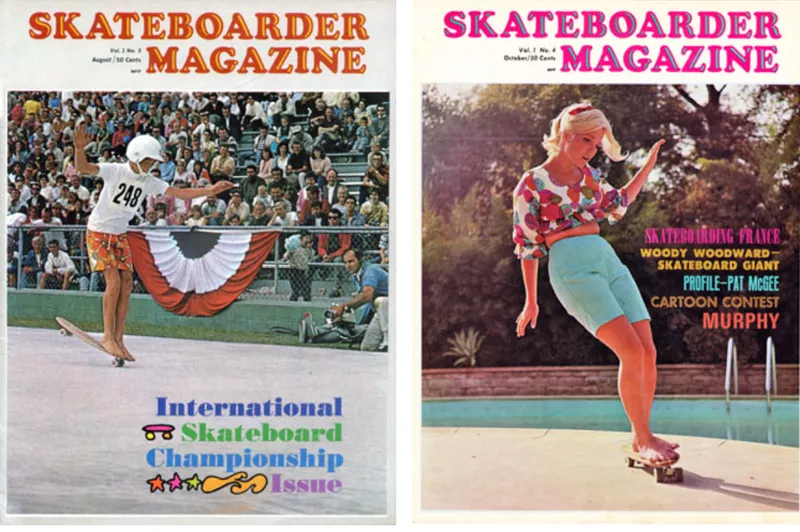
Skateboarder Magazine was first published as The Quarterly Skateboarder in 1964 but was changed to Skateboarder Magazine in 1965. Skateboarding Heritage
The Quarterly Skateboarder was the first-ever magazine all about skateboarding.
Sadly, only four issues were published, and the magazine died until Surfer Magazine gave it a revamp in the early 1970s.
The Army once tried out combat skateboards.
In the early 1990s, the U.S. military decided to test out skateboards for quicker maneuvering in urban settings. The program was called “Urban Warrior ’99,” but it was a flop.
All the protective gear required was too impractical for Marines in the field.
We’re surprised the idea got off the ground at all.
Streetwear is a big part of skateboarding’s appeal.
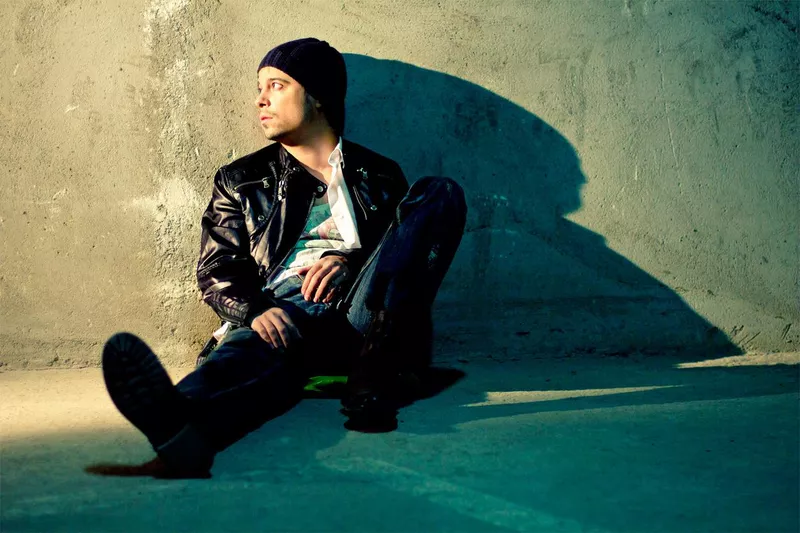
Streetwear spawned a whole new style of clothes. nemke / Getty Images
Streetwear, a casual clothing style popularized in the 1990s, came from a mashup of New York hip-hop culture and California surf fashion.
More people purchase skateboards if they’re attracted to the board’s design.
Those with streetwear-inspired designs tend to sell the best.
Santa Cruz was the first official skateboard brand.
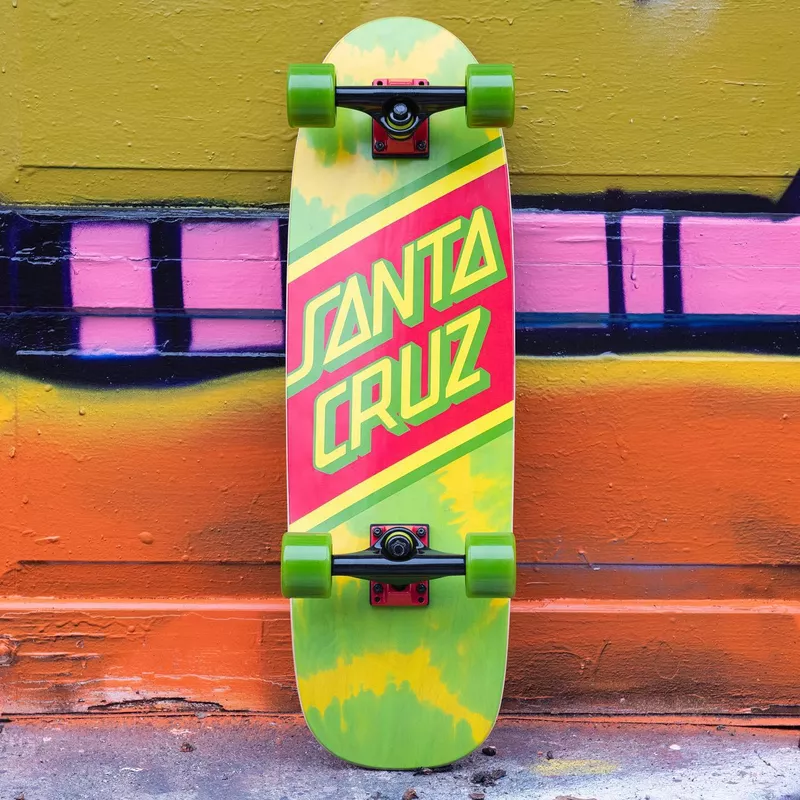
Their first-ever Santa Cruz skateboard was produced in 1973. Santa Cruz Skateboards / Facebook
Santa Cruz skateboards were founded in 1973 in California. They made a batch of 500 boards, and they all sold out quickly.
Santa Cruz went on to become one of the most iconic skateboarding brands and is still extremely popular today.
Tony Hawk’s foundation has built hundreds of skate parks.
That’s 623 skate parks, to be exact. Tony Hawk is a perfect example of how pro skateboarders can continue making a name for themselves in the sport even after they retire.
His foundation has built hundreds of skate parks across the nation to make the sport even more accessible, and more are being built each year.
At one point, riding skateboards barefoot was the norm.
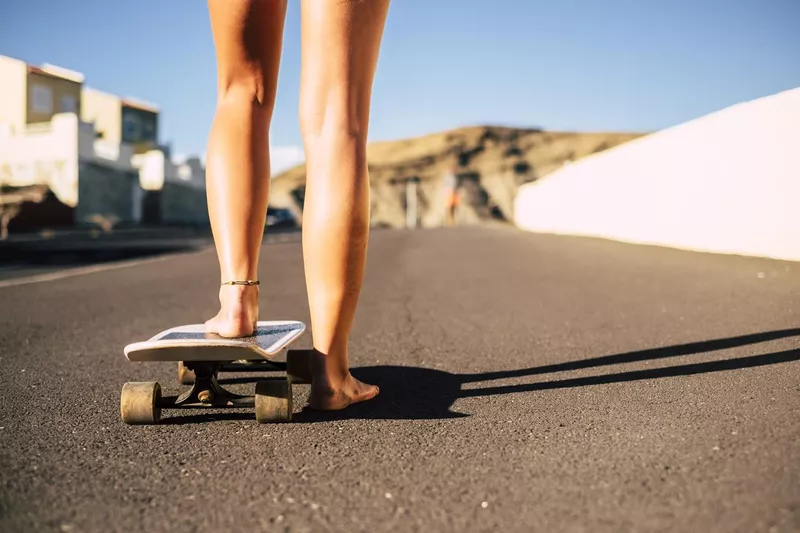
With or without shoes, skateboarding is fun. simonapilolla / Getty Images
It sounds like a recipe for stubbed toes, but skateboarding barefoot makes sense given the sport’s history.
It was popularized by surfers, who would skateboard when the waves were lackluster.
They surfed barefoot, so skateboarding barefoot made sense.
The first female pro skateboarder was Elissa Steamer.
Born in 1975, the 5-foot-4, 120-pound dynamo broke ground as one of the first women to challenge the “skateboarding is for men” stereotype. Steamer won gold at the Summer X Games four years running.
It’s thanks to women like her that so many young girls today feel welcome in the sport.
The first skate park opened in 1965.
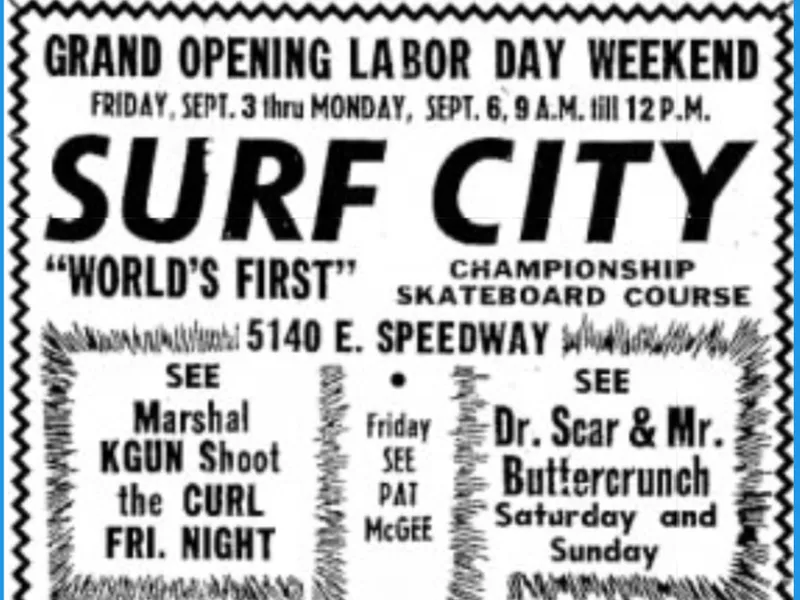
The first skate park opened in Arizona. Newspapers
Although skateboarding was invented much earlier, skate parks didn’t come around until the 1970s. The first one, Surf City, opened in 1965 in Tuscon, Arizona.
After that, more skate parks popped up year by year.
The record for most stairs jumped on a skateboard is 25.
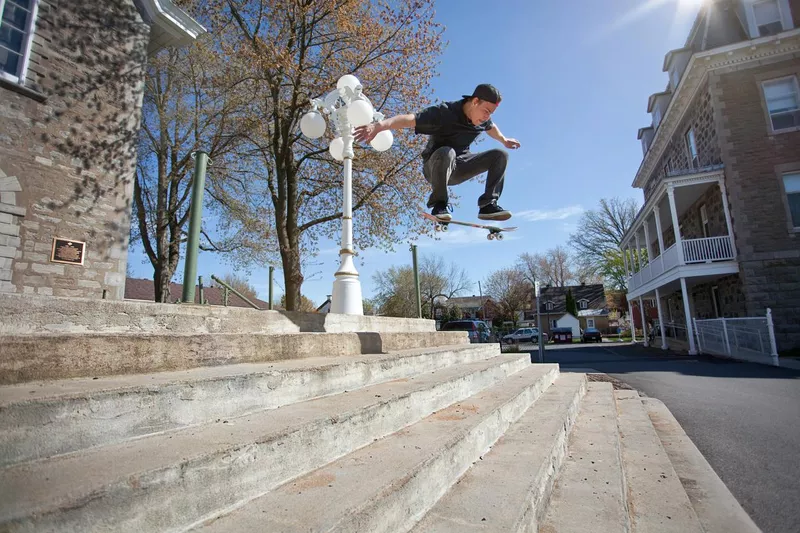
Fearless. FelixRenaud / Getty Images
Aaron “Jaws” Homoki holds this mind-blowing record, but it didn’t come without a cost.
He jumped down 25 steps in Lyon, France, but his first try landed him in the ER with a badly torn MCL.
The first skate shoe was called the ‘Randy 720.’
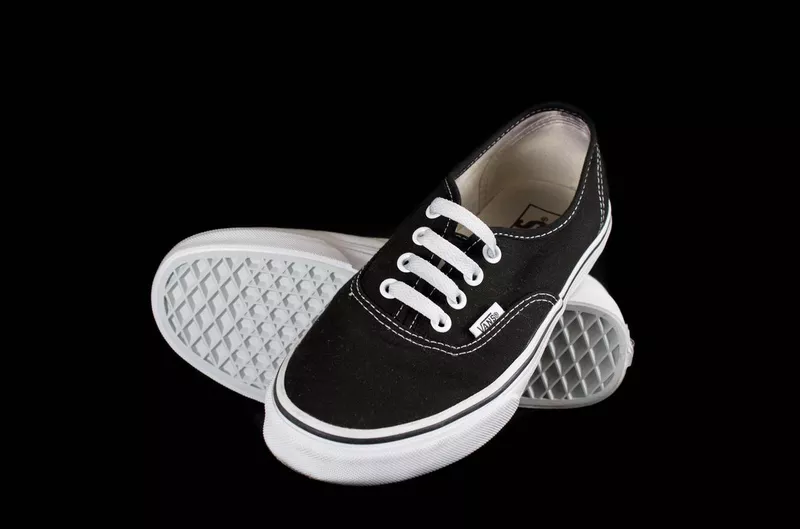
Vans shoes come in a range of styles. Dnaveh / Getty Images
Invented by the Randolph Rubber Company in 1965, the Randy 720 didn’t sell well. The company went under the same year, but a former employee, Paul Van Doren, founded a new company based on the idea.
He and his brother named it Vans, and the rest is history.
You’re never too old to learn to skate.
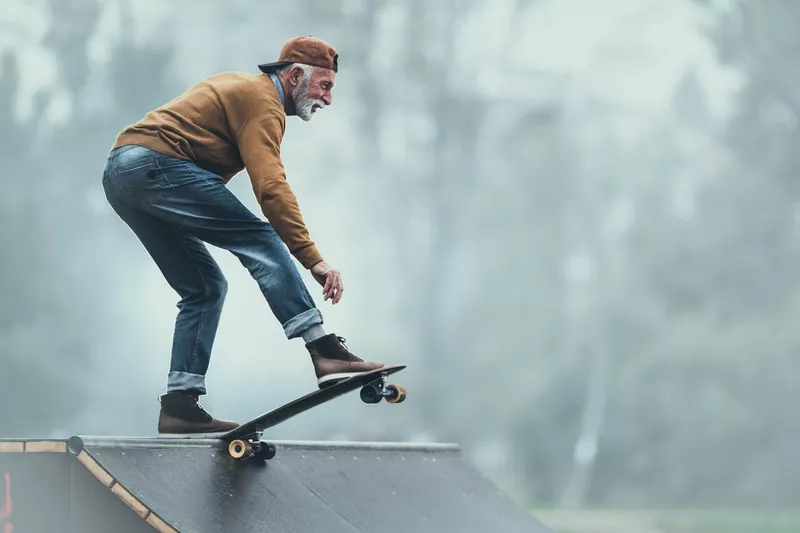
Age is just a number for skateboarders. skynesher / Getty Images
In 2006, 71 percent of skateboarders were between 12 and 17 years old. Now, youngsters only make up 45 percent of the total skateboarder population.
As long as you have the right protective gear, you can pick up the sport or get into it again at any age.
The longest official grind was 204 feet.

Jagger Eaton won the first Olympic skateboarding medal, earning a bronze in the men’s street competition in Tokyo, Japan, in 2021. Jagger Eaton / Instagram
Jagger Eaton holds the longest confirmed record for a 50-50 grind at 204 feet, set in October 2016.
Luis De Los Reyes, better known as Moose, is said to have broken that record, however, grinding 292 feet on a curb.
Skate parks are good for the economy.
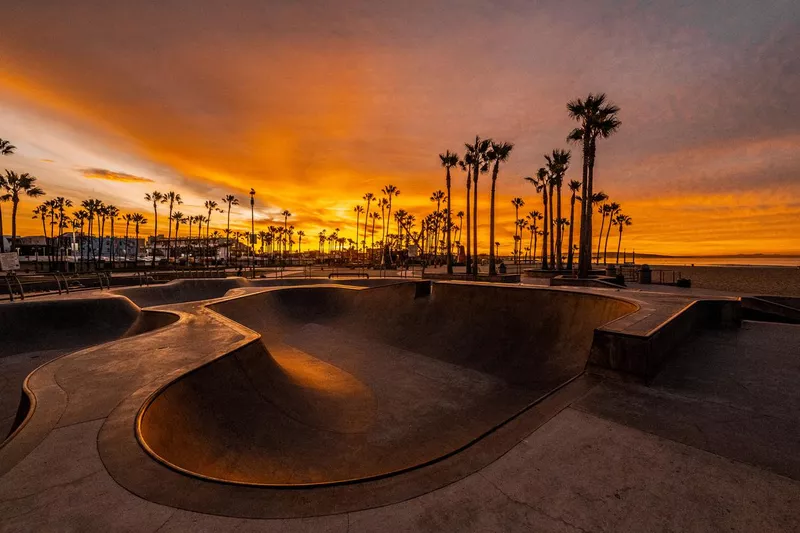
Stay gold, skaters. Extreme-photographer / Getty Images
It’s tough to find exact statistics on this one, but all signs point to skateboarding having a positive influence on local businesses.
Skate parks bring traffic from teens and families to the neighborhood. After skating for hours in the hot sun, it makes sense that they might want to cool off and fuel up at a local restaurant.